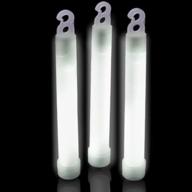
Review on 💡 Discover the Power of RuiLing Electromagnetic Continuously Electronic Components by Christopher Bates

5v = not very good, 3.3v = barely works
They appear to be designed for 12v applications. I couldn't get any sound from them by applying 3.3V without applying PWM to them. 5v same story. What I got from them was very low volume. I also bought a few other piezos - also active ones - and they are significantly louder and can be driven directly with 3.3 V, just by applying 3.3 V to the wires you get a nice loud beep. 5v, same story. However, they are quite confident that they have fairly optimistically called this suitable for Arduino/5v/Raspberry Pi. I think technically they aren't wrong, but I think most beginners will plug them in and not even get a sound from them without realizing you can use PWM. Even then, the experience is just below average. They are clearly intended for higher voltage applications. I hooked them up to my desktop power supply and they seem to make good sound on their own at around 6V and then turn off at around 12V and draw 70mA. They were voltage limited, not current limited, but they didn't really get louder the harder I pressed. That tells me they are probably 6-12v piezos. Perhaps best suited for automotive use. To see if I could determine the yield point, I set the voltage on my bench power supply to 24V and then gradually increased the mA limit. On this graph you can see the mA value (limited by the power supply) and then the voltage at which it has stabilized (limited by the device). read but quietly 40mA - 7.4V, about the same as before, 50mA - 8.7V, slightly increased volume, 60mA - 9.9V, louder but still seems to lose some volume (I got it before these readings little abused. it could be on its way to its death) 70mA - 11V about the same volume as before (peak volume seems to be) 80mA - 12.4V about the same volume, 1W consumption seems to be the intended maximum. 1.2W. I think the voltage here is ok but over the 1 watt limit. (I assume this is the fault of my power supply trying to keep the draw at 130mA.) 140mA - 17V same as above 150mA - 16.2V same - slightly more stable 160mA - 16.2 V equal - mostly stable 170 mA - 16.2 V equal - slightly higher tone 180 mA - 16.2 V equal (note: no warm feeling from speaker) 190 mA - 16.7 equal, maybe a little higher tone? as the voltage lowers and at 18220mA - 18V - the pitch is still increasing, as the voltage increases - the volume appears to decrease but is likely to get just high enough to get into the upper audible range (about 17kHz - i hear up to 20 kHz - ish) 230 mA - 18.5 V is the same, but the beginning very clearly "sprayed" after a few seconds of work. now it feels hot. 240mA - 19-20V equals 250mA - 20V - heavy spatter when it peaks at 18V then on to 20V 260mA - 20V - so much spatter that it's more off than on. it is far beyond. but I'm wondering if it can handle 50% duty cycle? it seemed to spatter constantly every time it hit 19 watts 300mA and finally squeak for the last time. it didn't open, now it just draws about 24V at 10mA (0.2W). It quickly cooled to room temperature.
- Safety signs and signals
- Cable is shorter than other picks
New products
Comments (0)
Top products in 🚨 Facility Safety Products
Another interesting products

🔥 FiberShield: Enhanced Blanket Suppression with JJ CARE Fiberglass

9 Review

Contact lenses Bausch & Lomb Biotrue ONEday, 30 pcs., R 8.6, D -6

62 Review

Arcturus Heavy Military Wool Blanket: A Must-Have for Occupational Health & Safety!

11 Review

🔥 Mylar Science Purchase: Your Ultimate Emergency Blankets

9 Review






